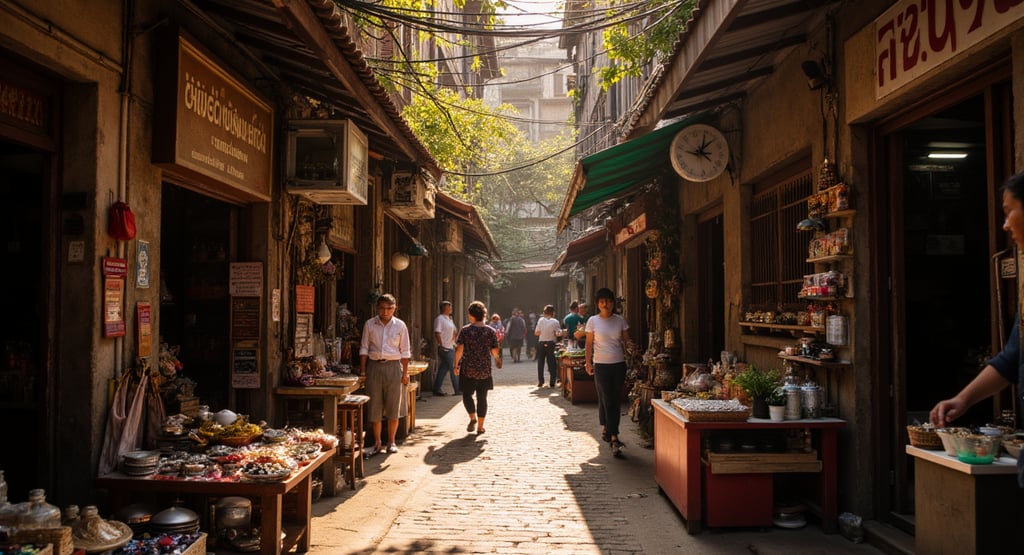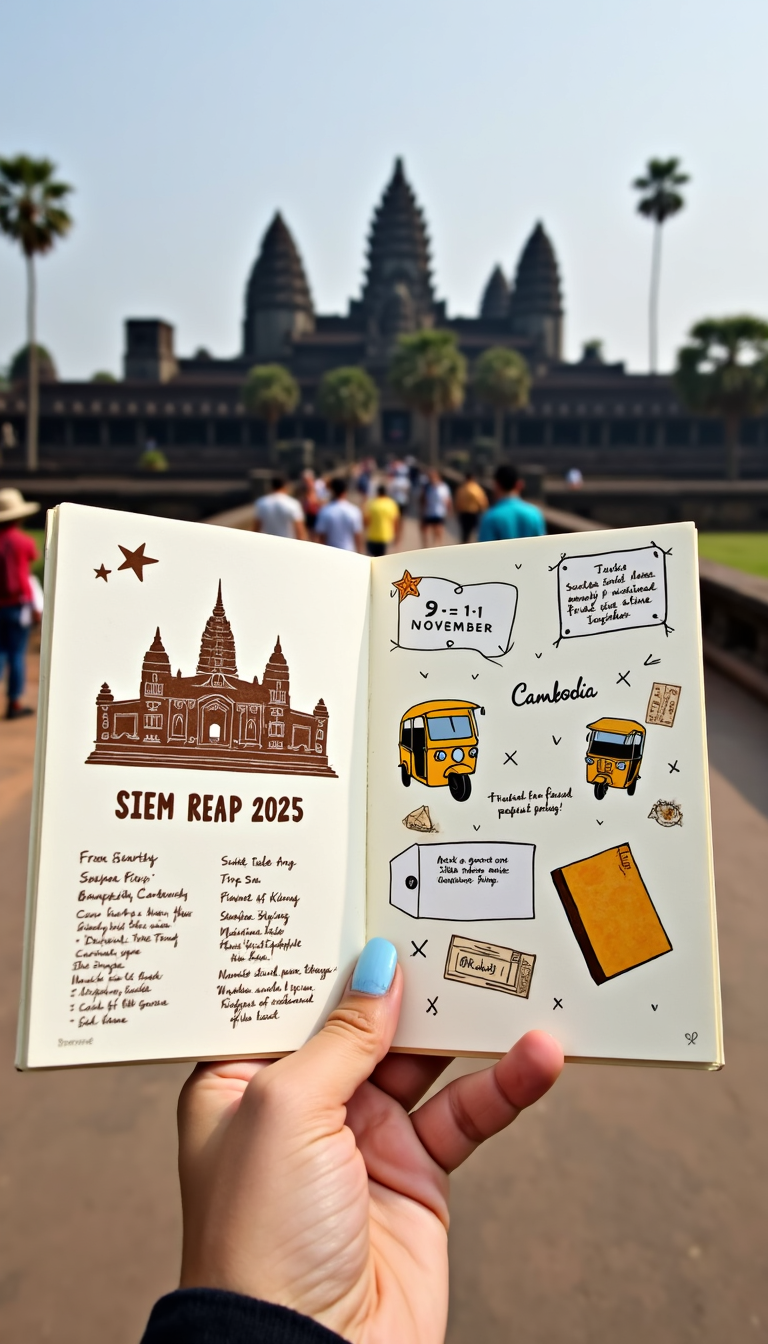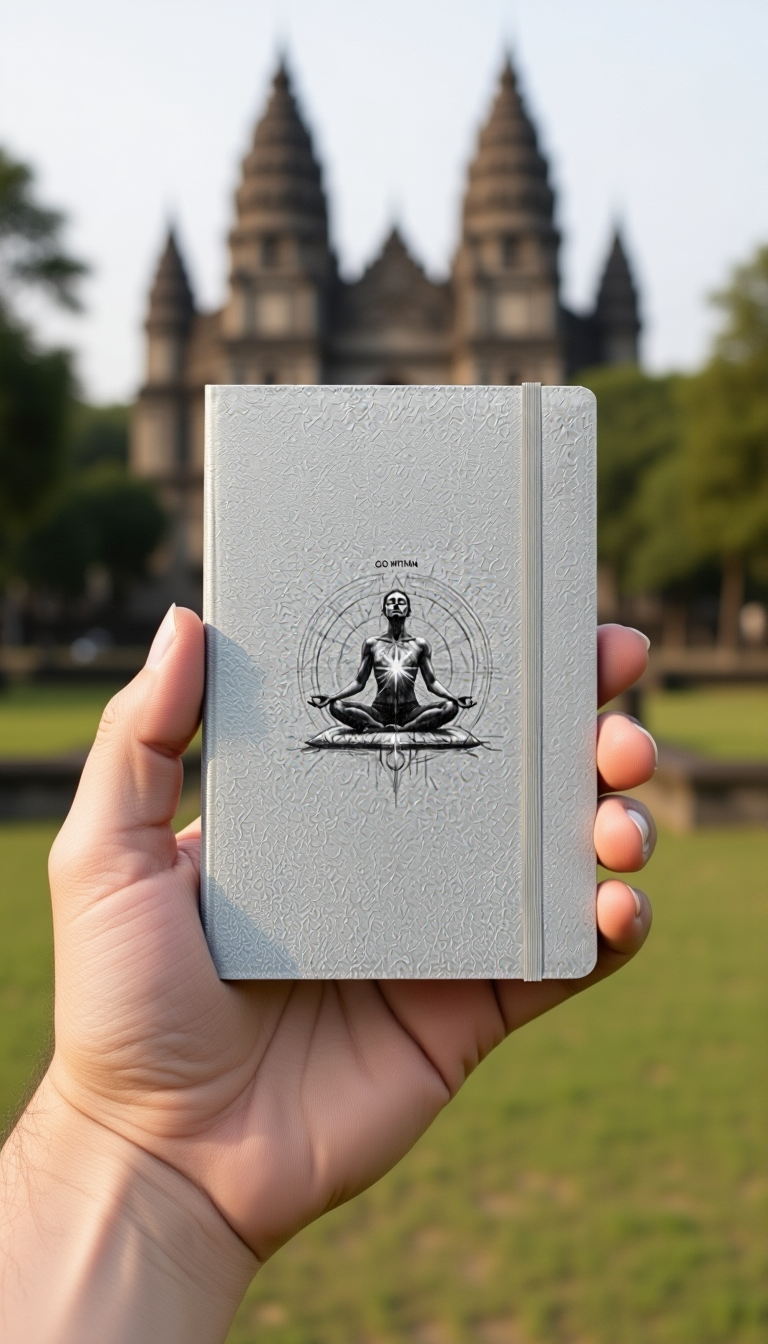Travel Journal: The 5-Minute Sensory Dump Method
Are you tired of 'phone-view' travel? Your camera captures the sights, but misses the soul. This post unveils The 5-Minute Sensory Dump, a powerful, low-pressure travel journal technique. Learn how to stop seeing your trip through a lens and start recording the essential, forgotten sensory details—the sounds, the smells, and the deep emotional feelings—for richer, more unforgettable memories.
Tami
10/5/20257 min read


Remember that amazing trip you took last year? The one with the breathtaking landscapes, the delicious food, and all those incredible moments? You’ve got a thousand photos on your phone, perfectly edited, maybe even a slick little video montage set to a trending sound. But honestly, when you scroll back through them… do you feel it? Really feel it?
I’m talking about the humid air sticking to your skin, the distant rumble of a passing tuk-tuk, the surprising hint of lemongrass in that roadside soup, or the exhilarating rush of finally finding that hidden alleyway market. Do your photos bring that back? Or do they just show you what you saw, leaving the rest a little… blank?
If you’re nodding your head, you’re definitely not alone. We’ve all been there. In our hyper-connected, visually-driven world, travel has become an exercise in capturing, sharing, and often, consuming through a screen. We snap a picture, maybe add a filter, upload it to the cloud, and move on. And while those photos are absolutely precious (I'm not saying ditch your camera!), they often only tell half the story. The really good half. The sensory half.
That’s where your humble travel journal – or traveler’s notebook – becomes your secret weapon. It’s the analog antidote to digital fatigue, a powerful tool for truly being present and reclaiming the rich, textured tapestry of your journey that your camera, for all its brilliance, just can’t grasp.
The Problem of the "Phone-View" Trip: When Your Memories Feel Flat
Think about it. We land in a new place, phone in hand. The first instinct is to pull it out, open the camera, and start snapping. Gorgeous temple? Snap. Vibrant street scene? Snap. Mouth-watering dish? You guessed it, snap! We’re documenting, curating, and sharing in real-time. And it feels productive, right? Like we're really making the most of every moment.
But here’s the rub: while our fingers are busy tapping and swiping, our brains are often in a different mode. We’re in "capture" mode, not "absorb" mode. We’re focused on framing the shot, checking the light, maybe even thinking about the perfect caption. We’re experiencing the world through a lens, both literally and metaphorically.
This isn't just me being a nostalgic Luddite, either. There's science behind it. When you view the world primarily through a screen, your brain is engaging a specific set of pathways. It's efficient for information processing, sure, but it can bypass the deeper, multi-sensory engagement that forms truly vivid, long-lasting memories. The act of handwriting, however, is a whole-brain activity. It engages fine motor skills, visual processing, language centers, and even spatial awareness (where you put things on the page!). This deeper engagement literally helps to cement those experiences into your memory in a way that passive observation or quick photo-taking simply can't.
I see this all the time living in a place like Phnom Penh, Cambodia. It’s an explosion of sights, sounds, and smells. The vibrant chaos of Russian Market, the quiet solemnity of a pagoda, the intense heat of the midday sun, the sweet, earthy aroma of jasmine and incense mingling with exhaust fumes. If I only relied on my phone to capture it, I’d have beautiful pictures, yes. But I’d miss the hum of the city, the feeling of sweat trickling down my back, the taste of salty, fried bananas from a street vendor, the rough texture of an ancient stone wall beneath my fingers. Those are the details that make a place real. Those are the details that my journal helps me hold onto.
Beyond the Visual: Tuning into the Five Senses
So, how do we shift from being a mere observer to a full participant? How do we download those rich, multi-sensory experiences directly into our brains and hearts, rather than just our camera roll? The answer lies in actively engaging our senses and giving them a voice – a voice that your journal can amplify.
Let's break it down, sense by sense, and see what wonders your notebook can capture that your phone often overlooks:
1. Sound: The Soundtrack of Your Journey
Your camera takes silent pictures. Your journal can capture the symphony (or delightful cacophony!) of your travels. Was it the rhythmic splash of oars in a serene lake? The incessant, friendly honking of motorbikes in an Asian city? The distant call to prayer echoing through ancient streets? The laughter of children playing in a park, specific to that culture?
Try to describe the quality of the sound. Is it sharp, dull, high-pitched, resonant? Is it constant or intermittent? What emotions does it evoke? This isn't just about identifying a sound, but conveying its essence.
2. Smell: The Olfactory Fingerprint of a Place
This is perhaps the most powerful sense for memory, yet it's entirely absent from your photos. Every place has its own unique scent profile. In a bustling market, it might be a heady mix of spices, fresh produce, exhaust fumes, and damp earth. In a quiet village, perhaps wood smoke, blooming flowers, and freshly baked bread. By actively noticing and recording these smells, you’re creating an instant portal back to that moment.
Don't just list a smell; try to describe its components. Is it sweet and cloying, or fresh and crisp? Is it pungent, smoky, floral, or savory? What memories does it trigger, even as you're experiencing it?
3. Touch/Texture: The Haptic Experience
How did the world feel against your skin? Was the air dry and crisp, or thick with humidity? Was the cobblestone street rough beneath your shoes, or the sand soft between your toes? What about the smooth, cool texture of a ceramic bowl, or the intricate embroidery on a piece of local fabric? These tactile details ground you in the physical reality of a place.
Focus on adjectives that evoke texture and temperature. Is it rough, smooth, cool, warm, gritty, slick, soft, coarse? How does it make your body feel—relaxed, alert, tired?
4. Taste: The Flavors of Adventure
Eating is an integral part of travel, a direct connection to culture. Yet, how many times have you taken a photo of a magnificent dish, only to forget the exact explosion of flavors days later? Your journal is where you can break down those tastes. Was it spicy, sweet, sour, bitter, umami? What were the dominant herbs, the surprising undertones?
Be a food critic for yourself. What were the primary and secondary flavors? How did they combine? What was the texture of the food? Was it crispy, chewy, tender, crunchy? Did it taste completely new, or comfortingly familiar?
5. Emotion/Feeling: The Un-Photographable Core
Beyond the physical senses, there's the internal landscape. How did a place make you feel? Was it a sense of awe standing before ancient ruins? The exhilarating fear of trying something new? The quiet contentment of watching daily life unfold? The frustration of a language barrier or a travel mishap? These raw, honest emotions are the soul of your journey, and they belong in your notebook.
Allow yourself to be vulnerable on the page. Don't just say "I was happy." Describe why you were happy. What triggered that feeling? What changed inside you in that moment? Was it peaceful, overwhelming, joyful, melancholic, curious?
The 5-Minute Sensory Dump: Your Daily Analog Antidote
Okay, so this all sounds great, right? But you're traveling, you're busy, you're tired. Who has time for a full-on prose masterpiece every day?
Exactly. That's why I'm introducing you to what I call The 5-Minute Sensory Dump. This isn't about perfect grammar, elegant sentences, or deep philosophical musings. It's about raw, immediate capture. It's your daily dose of analog antidote, ensuring you don't lose those precious, un-photographable details.
Here’s how you do it:
Find Your Moment: Sometime during your day, or perhaps at the very end when you’re winding down, find five minutes. It could be on a park bench, while waiting for a coffee, or tucked into your bed before sleep.
Grab Your Gear: Open your travel journal and have your pen ready.
Set a Timer (Optional, but Recommended): A five-minute timer keeps you focused and prevents overthinking.
Dump, Don't Discern: For those five minutes, your only goal is to fill the page with as many sensory inputs as you can, specifically focusing on the five categories we just discussed. Don't censor yourself. Don't worry about complete sentences. Use bullet points, single words, fragments – whatever comes to mind.
Here's a simple template you can quickly jot down in your journal each day:
Sight: (What's one thing you saw today that no photo could truly convey?)
Sound: (The most dominant or most surprising sound you heard.)
Smell: (What scent stood out, good or bad?)
Touch/Taste: (What did you feel on your skin, or what taste lingered?)
The Feeling: (One dominant emotion or physical sensation of the day.)
Example from my own journal here in Phnom Penh:
Sight: The way the afternoon sun hits the gold trim of Wat Phnom, almost blindingly bright, against the deep blue sky. It's a gold you have to see to believe.
Sound: The constant, rhythmic "clack-clack-clack" of a woman chopping green mango on the street corner for som tum, mixed with a distant, tinny pop song from a shop.
Smell: Sweet, smoky incense mixed with a faint, metallic tang near the river. Also, the heady scent of jasmine from a passing vendor.
Touch/Taste: The stickiness of iced coffee on my fingers from a too-full cup. The surprisingly refreshing crunch and tartness of the mango salad.
The Feeling: A deep sense of alive-ness amidst the chaos. Overwhelmed, but utterly present.
That's it. Five minutes. No pressure. No need for masterpieces.
The Promise: A Richer Journey, A Deeper Memory
When you commit to this small, consistent practice, something magical happens. You start to notice more while you’re traveling. Your senses sharpen. You become more attuned to the nuances of a place, because you know you’ll be giving them a voice later.
And years from now, when you open that humble notebook, those handwritten notes won’t just tell you what you did. They’ll instantly transport you back. You’ll hear the sounds, smell the air, feel the sun, taste the food, and vividly re-experience the emotions of that journey. Your photos will suddenly have context, depth, and a vibrant, multi-sensory story to tell.
So, next time you pack your bags, make sure there’s room for your analog antidote. Your camera will capture the postcard. Your journal will capture your soul’s true experience. Happy travels, and happy scribbling.




